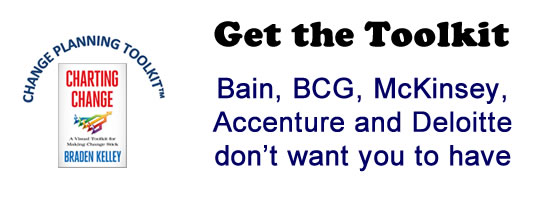Emerging Collaborative Tribes, Networks and CollectivesÂ

It is becoming widely accepted that collaborative organisations adopt more fluid and loose structures, where individuals are given greater responsibility to take smart risks, make decisions appropriate to their role and the task concerned:
- Without hierarchy, status, power plays and the conventional “red tape†implicit rules, where people have a hunger to learn, are willing to continually improve and learn by doing.
- Where people recognize the need to change the broader working environment to implement and sustain the desired changes, including governance processes, funding models and processes.
- Where organizations invest in software tooling and automation to support people to work smarter and faster.
Collaboration workplace culture examples
New, inspirational and adaptive models for embedding a collaborative workplace culture have evolved, that are timely, agile and relevant for 21st century organizations include four collaborative constructs: Â Â Â
- Teams and teaming; defined by what they are trying to achieve, may be transient, and are made up of a collection of diverse and different roles required to complete the purpose, goals or tasks. Also by sharing their complimentary skills, knowledge and experience they can contribute to a particular task, problem, creative conversation, discussion or activity through effective team processes, trusted relationships, role clarity and mutual accountability.
“A typical team at Australia Post has a business analyst, a designer, a tester, several developers and an “iteration manager†who operates like a conductor, managing the workflow to get the best out of the team. Gough says he looks for “T-shaped people†who have deep knowledge of their specialist area (the vertical part of the “Tâ€) but know enough about other areas to help out if needed (the horizontal part of the “Tâ€)â€.
- Tribes: ANZ’s agile transformation uses terminology from the so-called “Spotify model†where it arranges workers into “tribes†of 150 people, and breaks down those tribes further into between 20 and 30 squads – each squad has a mix of people and skills to enable it to function autonomously and be self-contained. Where difference’s and diversity are maximized through creating discord and disagreement and even conflict to co-create generative solutions.
“Getting cross-tribe collaboration is something we’re really working hard on again now to go ‘How do we keep people aligned across tribes so that we don’t reinvent the same problem and solve it in one tribe and then solve the same problem in another tribe? Part of the solution to that is to have “cross-tribe collaboration groups called chapters and guilds†– essentially comprising people with common interests and experience – such as user experience – that have the remit to roam across tribesâ€.
- Collectives: Larger group of individuals, connected by technology, who self-organize, work together on common projects without relying on internal hierarchies, which may exist temporarily or over long periods. Where membership is voluntary and people willingly share knowledge, skills, resources, experience and wisdom to create a free, transparent and safe space, where people are motivated to contribute to the whole or the common good.
Kickstarter is an American public-benefit corporation based in Brooklyn, New York, that maintains a global crowdfunding platform focused on creativity and merchandising. The company’s stated mission is to “help bring creative projects to life”
- Eco-system: A business ecosystem is the network of organizations – including suppliers, distributors, customers, competitors, government agencies, and academic institutions get involved in the delivery of a specific product or service by co-operating and collaborating internally. The goal is to compete externally by driving new collaborations to address rising social and environmental challenges, harnessing creativity and innovation to lower the cost of production or allow members to reach new customers, accelerating the learning process to effectively collaborate and share insights, skills, expertise and knowledge and creating new ways to address fundamental human needs and desires.
The Global Food Safety Initiative (GFSI), a non-profit organization whose members include many of the world’s largest food producers, distributors, and retailers. It helps coordinate a global, co-creative, and collaborative approach to addressing the growing challenge in a global food system of ensuring safety for consumers and protecting the reputation of the industry. Some of its members compete ferociously in their markets, but also collaborate aggressively to ensure the certification, shared standards, superior monitoring, and shared learning and leading practices that together create a safer food industry and boost consumer confidence.
 In a nutshell®
As Adam Kahane states in his new book-  “Collaborating with the enemy†– “Collaboration doesn’t mean that either you prevail & get what you want, or both of you sacrifice & meet somewhere in the middle. The higher potential of collaboration with diverse others is that together you’ll be able to understand more of your situation & so will be able to create new options that are better than the ones you’d been able to imagine or implement separately – better than forcing, adapting or exiting.â€
Experimenting with these adapting some of these new collaborative models, enables organizations and their leaders, to shift their focus – from being defensively competition towards being constructive. Where the goal is to create high performing, collaborative workplace cultures where people have the time and space to deeply connect and co-create value, where people feel safe and have permission to freely share ideas, wisdom, knowledge, information, resources, and perspectives.
The best way to achieve that is through building trust, creating discord and conflict to generate creative ideas and innovative solutions, focusing more on co-creation and emphasizing collaboration, not competition.
Join the next free monthly innovation webinar in our Making Innovation a Habit Series – “Coaching on the cusp of disruptionâ€Â It’s on Thursday, 13th June 2019 at 9.00pm Sydney & Melbourne, 7.00pm Perth & Hong Kong, 12.00pm London, 1.00pm Berlin, 7.00am New York. Register now. In just 45 minutes learn how the leadership and coaching playing fields have shifted, and how, as innovation coaches we lead the way by enabling our clients to survive and thrive through exponential change and disruption.
Find out about The Coach for Innovators Certified Program, a collaborative, intimate & deep personalized learning program, supported by a global group of peers over 8-weeks, starting October 15, 2019. It is a deep blended learning program that will give you a deep understanding of the language, principles & applications of a human centered approach to innovation, within your unique context. Find out more.
Wait! Before you go…
Choose how you want the latest innovation content delivered to you:
- Daily — RSS Feed — Email — Twitter — Facebook — Linkedin Today
- Weekly — Email Newsletter — Free Magazine — Linkedin Group
 Janet Sernack is an ICF ACC accredited executive coach, corporate trainer, group facilitator and culture and change consultant with some of Australia’s and Israel’s top 100 companies. She is the Founder of ImagineNation™ an innovation education company that provides innovation e-learning programs including The Coach for Innovators Certified Program™ experiential learning events including The Start-Up Game™. Follow @JanetSernack
Janet Sernack is an ICF ACC accredited executive coach, corporate trainer, group facilitator and culture and change consultant with some of Australia’s and Israel’s top 100 companies. She is the Founder of ImagineNation™ an innovation education company that provides innovation e-learning programs including The Coach for Innovators Certified Program™ experiential learning events including The Start-Up Game™. Follow @JanetSernack
NEVER MISS ANOTHER NEWSLETTER!
LATEST BLOGS
The Incredible Shrinking Laptop
As technology advances and people’s demands for ever-thinner, ever-lighter laptops increase, more and more the thickness of a laptop is…
Read MoreA Revolution in Management Consulting?
Management consulting firms are built on a model that requires the maintenance of a bench of their people to staff…
Read More



